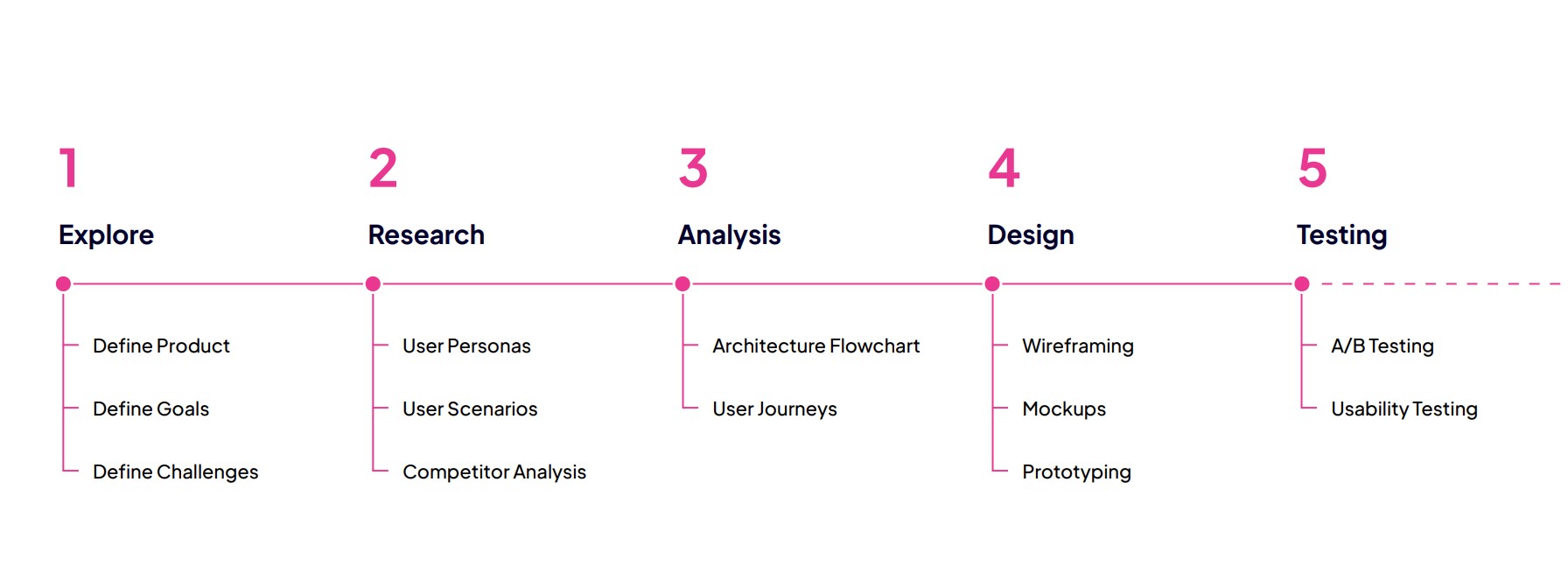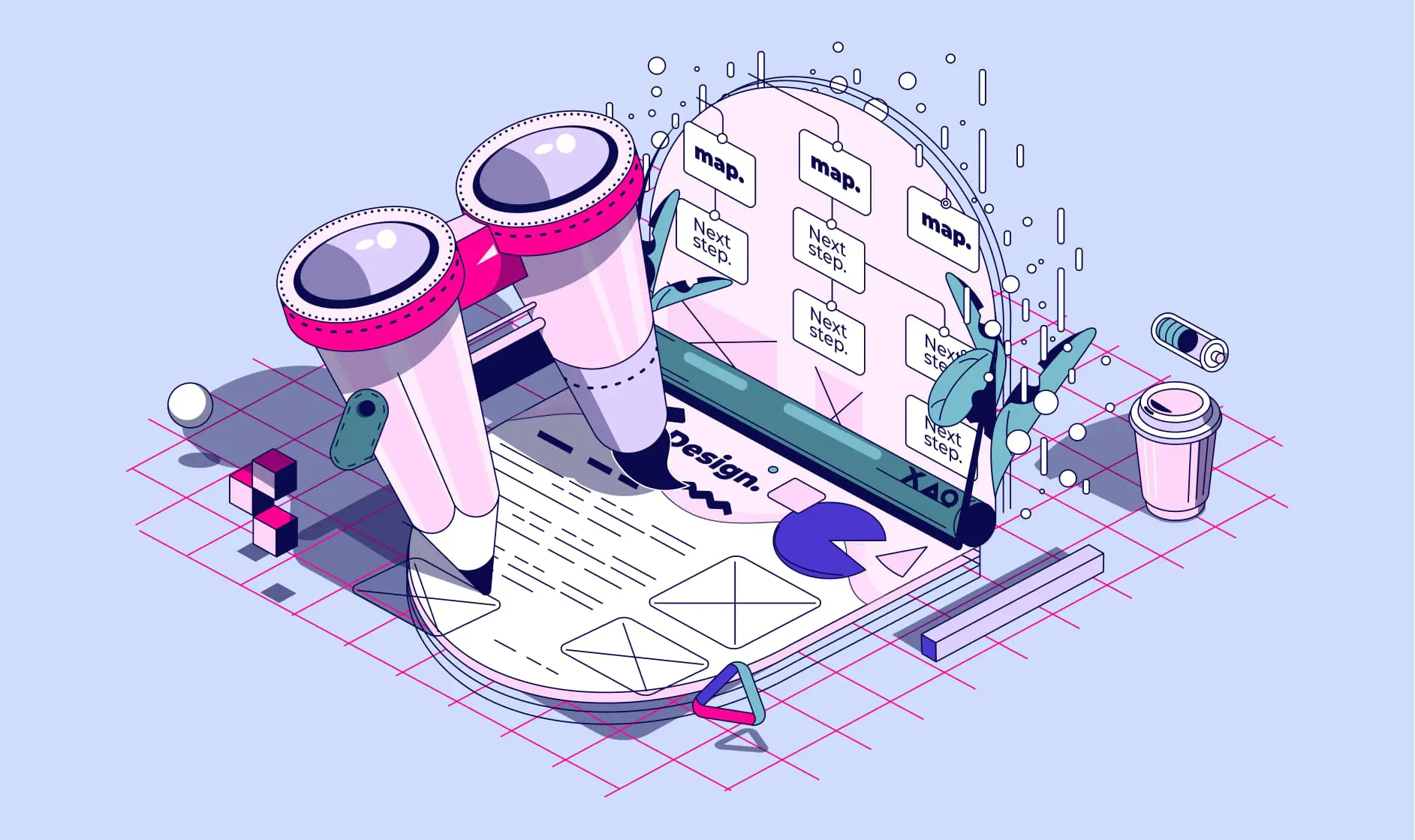Design is all about solving problems. And at the Putti design studio, we take a holistic and user-centric approach to design that focuses on solving the problems of both our clients and their customers. Our team of UX designers and UI experts work together to create elegant design solutions and experiences that resonate with our clients and their customers.
Importance of Good UX/UI
At its core, user experience (UX) design is all about making sure that users have a positive experience when using a product or service. User interface (UI) design, on the other hand, focuses on the look and feel of the product or service. A good UX/UI design process will take both of these factors into account to create a product that is both easy to use and visually appealing.
Unfortunately, many businesses place too much emphasis on UI at the expense of UX. As a result, they end up with products that look great but are difficult to use. This can lead to frustration for users and ultimately cause them to abandon the product altogether.
Great UX is crucial for any business, and can quite simply be the difference between a customer choosing your product or service over another’s. A happy user experiences satisfying needs on your platform which makes them likely to recommend it as well.
Our Approach to UX/UI Design
Here at Putti, we take a five-step approach to design that starts with understanding the problem and ends with delivering a high-quality product.

1-Explore
Exploring an idea, defining a problem and goal
The best products come from a deep understanding of their context and what it takes to solve user problems. Our design process begins with exploring an idea. This is where we try to understand what the product or service is all about and what needs it is trying to solve. We also take this opportunity to get to know the client and their customers. Only once we have a good understanding of the problem can we start working on finding a solution.
Once you have an idea of the problem to be solved and the target users, it’s important to define measurable goals which will help determine whether or not the project is successful. These can be qualitative (like user satisfaction) or quantitative (like conversions/sales). UX experts use various research methods to understand their users, as well as what a better experience looks like for the project.
2-Research
Research, information gathering, and competitor analysis
The heart of UX Research is a technique that combines multiple methods to gather information about how people interact with your product. There are five critical types in this process: interviews, focus groups, ethnographic research, surveys, and card sorting. This gives us an accurate representation not only of what our customers will look like when they use it but also allows the team ample insight into different options before making decisions.
Once you have conducted your UX research and gathered information, it’s essential to analyze what competitors are doing. This will help understand the current market landscape as well as give some insights into popular design trends for user experience professionals such as search engine optimization or social media integration.
3- Analysis
Sitemaps & Information Architecture (IA)
We spend a lot of time analyzing and synthesizing data to find insights that we use as input into our idea generation process. Once the ideas are identified through this step, they can finally be highlighted in their proper form with IA strategies that match user problems perfectly against solution possibilities based on those same survey results.
While the primary goal of creating a site map is to improve information architecture, it’s also essential that you have good sitemaps. A sitemap provides an excellent way for grouping related content and identifying where things should go on your website or app so there aren’t any surprises when users explore their surroundings.
Building User Flows
User flows are a great method for segmenting and defining a user experience. They allow us to track what screens users typically see when they interact with a product and how they interact with those screens. The user flow is very effective when it comes to communication with developers. This information is beneficial during the implementation phase of the design process.
4 – Design
Wireframing
Wireframes are low-fidelity (meaning they’re not meant to look like the final product) but they help you think through the UX of your site or app and ensure that all user needs are being met. They are like an architectural guide for your website. They display all the basic features of a page, such as functionality and content architecture which help you to design better websites in future. A similar wireframe user journey map can be used by marketers too so they know about their products’ potential audience.
A wireframe is very much similar across different industries because it gives designers/ developers essential insights into how users will interact with their product at various stages during the interaction process.
Mockups & Prototyping
The next step after wireframes are completed and approved is to prototype your final product. This early version will allow you to see how different pieces come together in the design, enabling both designers on our team as well as potential customers who view this webpage or app to understand what they’re looking at more clearly than before.
In order for us to ensure that all parts of the interface work seamlessly without any errors introduced during the development process, we need something tangible like prototypes so there won’t be any confusion about where certain features should go when being used by someone else other than ourselves.
5 – Testing
Usability testing
It is crucial to test the design of your website with actual users. This will help you find any problems before development begins, which can be fixed during this process so that there are no issues later on down the line when functionality has been added or changed in different versions across platforms like mobile devices and desktop browsers etc.
Usability testing is an important step in the process of designing a website or application. In order to get real-time feedback from potential customers, we do our usability tests face-to-face so that they can share their thoughts on what works well and where things may need some work before launch day.
We hope this article provides some clarity into our design process. Our five-step process might be lengthy to some but our more than a decade of experience proves that our process works and ensure we deliver high-quality products in the end.
We take the time upfront to understand your users, their needs, and what you’re hoping to accomplish with your product. This approach has helped us create successful user experiences for both web and mobile applications across a variety of industries.
Talk to us about UX and UI—we’d love to share more about how we can help you create a great product that delights your users.

